A JOURNEY TO SANTIAGO - SAINT JACQUES DE COMPOSTELLE A PILGRIM’S PROGRESS
Lynne Burney Yashoda
Part 3 - Espagne 2002 - Anglais / Français (version française plus bas)
This story begins just before Easter in the year 2000. It spans 4 years and 3 seasons. As I tell the story I will pause to ask you, the reader or listener, a question which you may choose to answer or share it with others.
You will notice that I refer to this journey alternatively as le chemin de Saint Jacques, the Way of Saint James, El Camino or sometimes just as Compostella.
Episode 16 : Industrial Wastelands - Diamond Centers
Before continuing the story of our journey to Santiago I want to tell you about something that, in fact, happened after we had completed our pilgrimage.
All the major towns on the Camino were surrounded by industrial wastelands that were a moral and physical struggle to walk through but they also all had old centers that were architectural gems stones that made the effort worthwhile. Hence the title: “Industrial Wastelands – Diamond Centers” of this episode. However, in this particular episode I want to focus on our experience of walking the industrial wasteland around the city of Paris. I want to draw attention to fact that the Camino continued to teach us the lessons of life even after the pilgrimage had been completed. In fact, it is said, that the real teachings of the Way begin once the pilgrim has turned her back to the setting sun in Fisterra - the end of the earth - and turned her face towards the new day: the sun rising in the East. Once the pilgrim has turned towards the source of life, has bowed to that Life Force, the real pilgrimage can begin.
Two or three years after we had completed the French Camino (El Camino Frances), Richard and I had decided to walk the Southern route starting in Arles, crossing the Pyrenees from Somport and meeting up with the main route - that we were currently on - at Puente la Reina (Queen’s Bridge).
He had made careful plans about distances and overnight accommodation when I put a spoke in his wheel by accepting a job assignment in Buenos Aires. Rather than changing his plans he cancelled everything and I flew to Argentina with my client. As a compromise I suggested we do what pilgrims from the days of yore had done: close the door of their cottages and start walking westwards. There is an adage that says the Camino starts at your backdoor step and finishes in Santiago. Most people today of course start at official starting places like Le Puy-en-Velay or Vézelay or Arles in France.
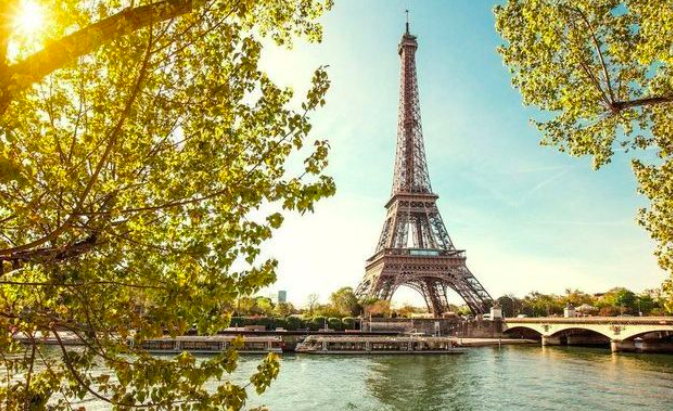 For us, living in a suburb west of Paris it meant leaving the landing on the 10th floor, crossing the Seine and the Bois de Boulogne as the sun rose over one of Europe’s biggest cities. The early morning rays picked up the leftovers from the previous night’s work. We steered our boots around used condoms and dog poop in the Bois (the woods that make up the green belt around Paris) and headed into the empty August streets of old Paris. At that time of day and year on a beautiful day, walking through Paris was pure joy. I caught sight of myself in cafe windows and chuckled; delighted with the image of the authentic pilgrim setting out on another adventure. We were walking from home to Tours, 200 kilometers south of Paris. We crossed under the Périphérique (the ring road that encircles the 20 arrondissements that make up the city of Paris) and headed into the southern suburbs via the green pathway (Chemin Vert). It is a nature walkway out of the city and into the suburbs that follows France’s major southwest train line.
For us, living in a suburb west of Paris it meant leaving the landing on the 10th floor, crossing the Seine and the Bois de Boulogne as the sun rose over one of Europe’s biggest cities. The early morning rays picked up the leftovers from the previous night’s work. We steered our boots around used condoms and dog poop in the Bois (the woods that make up the green belt around Paris) and headed into the empty August streets of old Paris. At that time of day and year on a beautiful day, walking through Paris was pure joy. I caught sight of myself in cafe windows and chuckled; delighted with the image of the authentic pilgrim setting out on another adventure. We were walking from home to Tours, 200 kilometers south of Paris. We crossed under the Périphérique (the ring road that encircles the 20 arrondissements that make up the city of Paris) and headed into the southern suburbs via the green pathway (Chemin Vert). It is a nature walkway out of the city and into the suburbs that follows France’s major southwest train line.
We slept the first night in the same hotel that I had used for years to run my coaching school trainings in Antony. My face was very familiar to the staff but my attire did not match my usual image.
“Different mission,” I explained parsimoniously.
The following day we plunged into the heart of the industrial wastelands that grow up around any major town or city: more space, cheaper rent, close to the market, ease of transport, storage capacity and devastatingly inhuman.
The concrete concealed most traces of the track we were following. The map had not kept up with the rapid growth of the corrugated iron walls and the billboards. Ugliness does not uplift the soul. I had to call upon my moral reserves to keep my legs moving past the warehouses, gas stations and mega retail stores.
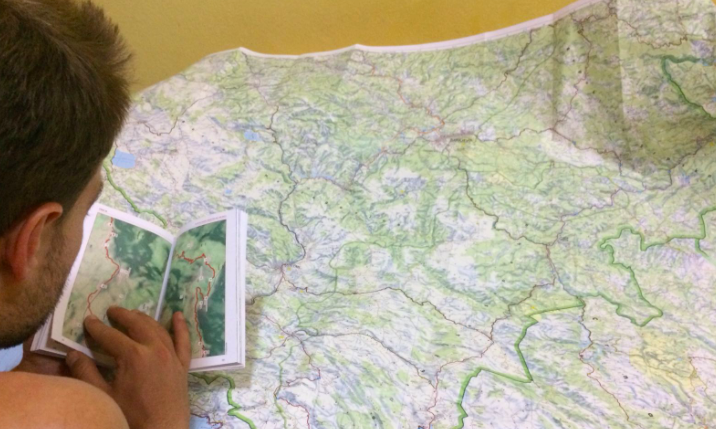 Even when we found fields again, they came with barbed wire, detours and unclear markings. The perfect psychotherapeutic adage: “the map is not the territory” was quite literally true. The territory was depressing. The map was useless. Even Richard the Reliable lost his way. We walked futile kilometers the wrong way. Car drivers were useless and no one else was on foot or pony. It was a dismal, demoralizing day. The day after that my water bottle burst. The day after that we stayed with holier-than-thou Christians. Our answers to their religious probing sounded hollow and apparently fell short of the mark our hosts had set for our souls. Sigh and groan and too tired to care very much.……
Even when we found fields again, they came with barbed wire, detours and unclear markings. The perfect psychotherapeutic adage: “the map is not the territory” was quite literally true. The territory was depressing. The map was useless. Even Richard the Reliable lost his way. We walked futile kilometers the wrong way. Car drivers were useless and no one else was on foot or pony. It was a dismal, demoralizing day. The day after that my water bottle burst. The day after that we stayed with holier-than-thou Christians. Our answers to their religious probing sounded hollow and apparently fell short of the mark our hosts had set for our souls. Sigh and groan and too tired to care very much.……
By the time we arrived in Chartres on the 4th day after closing the door to our apartment I was fed up and regretting my great idea to walk from home to Tours. It was a poor substitute for the big plan to walk the southern route from Arles. My guilt over Argentina and Richard’s anger over his plans being thwarted had both gone underground and we were engaged in a compromise that neither of us fully adhered to. The unspoken toxicity interfered with the flow of our endeavor. I wanted to quit but did not say so.
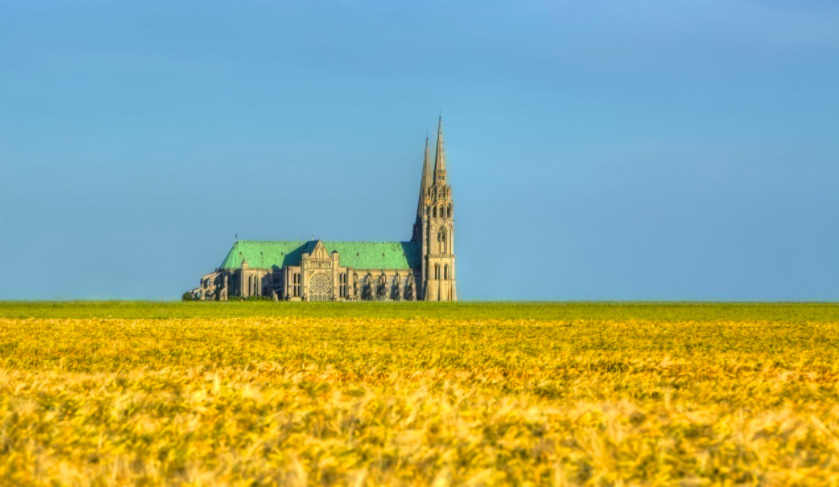 I knew the town of Chartres very well and I had visited its magnificent gothic cathedral many times. It was the destination of a pilgrimage in itself as well as being an important stop for pilgrims on their way to Santiago. There was too much history there for me: it was my first husband’s home town.
I knew the town of Chartres very well and I had visited its magnificent gothic cathedral many times. It was the destination of a pilgrimage in itself as well as being an important stop for pilgrims on their way to Santiago. There was too much history there for me: it was my first husband’s home town.
Then a strange thing happened. Like so many “occurrences” along the Way there was no rational explanation for what happened to my right leg. We had booked into a hotel in the center of Chartres not far from the cathedral. We were to spend a rest day in the heart of the old town recovering from the ordeal of exiting Paris through its industrial wasteland before moving on to the next stage of our journey to Tours.
I went to get out of bed the following morning but my right leg refused to function. I could put no weight on it without feeling intense pain. I could not stand. I could not walk. I lay there imaging all kinds of incurable afflictions. Richard displayed very little sympathy. I was locked up in a crime and punishment scenario. I had gone to Argentina. I had expiated my guilt. I had walked the wastelands. And now I couldn’t walk. It felt biblical.
I whispered, “I don’t think I can go any further.”
“I want to stop,” I added.
Richard agreed immediately and it was as if a huge burden had been lifted from my shoulders. It was as though it had had to be me that gave up the quest. My release opened up the flow of words between us. We put the last 4 days behind us and Richard returned to his preferred planner mode to come up with “Great Alternatives” to walking to Tours.
I swung both legs over the side of the bed and had walked to the bathroom before I realized a miracle had taken place.
These things happen on the Camino.
We took the train back to Paris and drove to the wine tasting region of the Loire Valley.
Questions
What do you know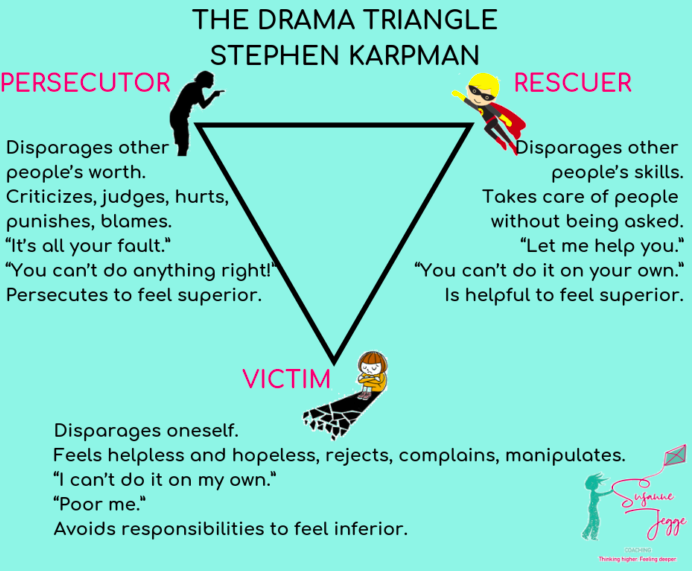 about the games we play in close relationships?
about the games we play in close relationships?
In this episode can you identify when who was in which role (victim – persecutor - rescuer) and at what moment?
Episode 16 : Friches industrielles - centres de diamants
Deux ou trois ans après avoir achevé El Camino Frances, Richard et moi avons décidé d’emprunter la route du sud à partir d’Arles, traversant les Pyrénées au Somport et rejoignant la route principale – sur laquelle nous nous étions passés - à Puente la Reina.
Richard avait soigneusement fait des plans quant aux distances et aux hébergements de nuit, quand j’ai mis un bâton dans les roues en acceptant de faire une intervention professionnelle à… Buenos Aires. Plutôt que de modifier ses plans, il a tout annulé et je me suis envolé pour l’Argentine avec mon client. Comme compromis j’ai suggéré que nous fassions ce que les pèlerins d’autrefois faisaient: fermer la porte de chez eux et commencer à marcher, direction l’ouest.
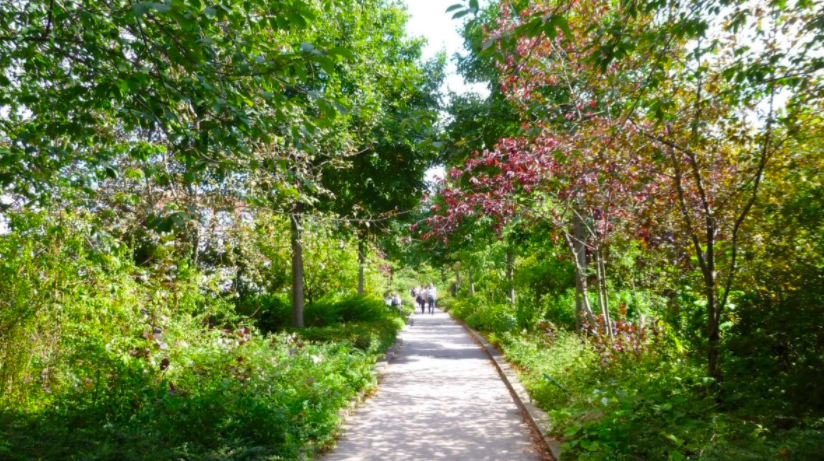 Pour nous, habitants d’une banlieue de l’ouest parisien, cela signifiait quitter le palier de notre 10ème étage, traverser la Seine et le Bois de Boulogne au moment où le soleil se levait sur l’une des plus grandes villes d’Europe. Ou ses rayons matinaux accrochent les détritus amoncelés la nuit précédente. Nous nous sommes dirigés, slalomant avec nos bottines pour éviter préservatifs usagés, déjections canines et avons filé vers les rues du vieux Paris, vides en août. À cette époque de l’année, par une belle journée, marcher à travers Paris était une pure joie. Je me suis vu dans les fenêtres des cafés et j’ai ri, ravie de cette image du pèlerin authentique en route pour une autre aventure et marchant depuis chez lui vers Tours, à 200 kilomètres au sud de Paris. Nous avons traversé sous le Périphérique (la rocade qui entoure les 20 arrondissements de Paris) et nous sommes dirigés vers la banlieue sud via la coulée verte, cette passerelle de verdure où la nature est hors de la ville et qui suit la principale ligne de train du sud-ouest de la France.
Pour nous, habitants d’une banlieue de l’ouest parisien, cela signifiait quitter le palier de notre 10ème étage, traverser la Seine et le Bois de Boulogne au moment où le soleil se levait sur l’une des plus grandes villes d’Europe. Ou ses rayons matinaux accrochent les détritus amoncelés la nuit précédente. Nous nous sommes dirigés, slalomant avec nos bottines pour éviter préservatifs usagés, déjections canines et avons filé vers les rues du vieux Paris, vides en août. À cette époque de l’année, par une belle journée, marcher à travers Paris était une pure joie. Je me suis vu dans les fenêtres des cafés et j’ai ri, ravie de cette image du pèlerin authentique en route pour une autre aventure et marchant depuis chez lui vers Tours, à 200 kilomètres au sud de Paris. Nous avons traversé sous le Périphérique (la rocade qui entoure les 20 arrondissements de Paris) et nous sommes dirigés vers la banlieue sud via la coulée verte, cette passerelle de verdure où la nature est hors de la ville et qui suit la principale ligne de train du sud-ouest de la France.
Nous avons dormi la première nuit dans le même hôtel d’Antony que j’avais utilisé pendant des années pour mes formations de coaching. Mon visage était très familier au personnel, mais ma tenue vestimentaire ne correspondait guère à mon image habituelle. « Mission différente »,expliquais-je avec retenue.
Le lendemain, nous avons plongé au cœur des friches industrielles qui poussent et s’amoncèlent autour de n’importe quelle grande ville proposant plus d’espaces, des loyers moins chers, proche des grandes enseignes commerciales, proposant une grande facilité de transport, des capacités de stockage. Au total, un ensemble terriblement inhumain.
Le béton cachait la plupart des traces de la piste que nous cherchions à suivre. La carte n’avait pas suivi la croissance rapide des murs en tôle ondulée, des panneaux d’affichage. La laideur n’élève pas l’âme. J’ai dû faire appel à mes réserves morales pour garder mes jambes en mouvement devant les entrepôts, les stations-service et les méga magasins de détail.
Même lorsque nous avons retrouvé des champs, ils s’accompagnaient de barbelés, de détours et des marques peu claires.
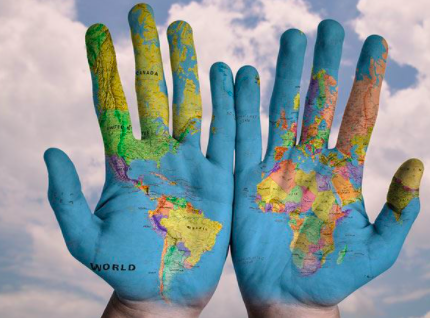 Soit l’adage psychothérapeutique parfait : « la carte n’est pas le territoire » était littéralement vrai. Le territoire était déprimant. La carte inutile. Même Richard le « Fiable » s’est perdu. Nous avons marché des kilomètres sans intérêt dans le mauvais sens. Les automobilistes n’étaient d’aucun secours et de toute façon personne d’autre n’était à pied voire à poney. C’était une journée lamentable et démoralisante. Le lendemain, ma bouteille d’eau a éclaté et le lendemain d’après, nous sommes restés avec des hôtes plus chrétiens que moi tu meurs.
Soit l’adage psychothérapeutique parfait : « la carte n’est pas le territoire » était littéralement vrai. Le territoire était déprimant. La carte inutile. Même Richard le « Fiable » s’est perdu. Nous avons marché des kilomètres sans intérêt dans le mauvais sens. Les automobilistes n’étaient d’aucun secours et de toute façon personne d’autre n’était à pied voire à poney. C’était une journée lamentable et démoralisante. Le lendemain, ma bouteille d’eau a éclaté et le lendemain d’après, nous sommes restés avec des hôtes plus chrétiens que moi tu meurs.
Au moment où nous sommes arrivés à Chartres, quatre jours après avoir fermé la porte de notre appartement, j’en avais marre et regrettais ma grande idée de marcher depuis la maison jusqu’à Tours. C’était un mauvais substitut au grand projet de faire la route du sud depuis Arles. Mon sentiment de culpabilité vis-à-vis de l’Argentine et la colère de Richard à propos de ses plans réduits à néant avaient tous deux cheminés de façon souterraine et nous étions engagés dans un compromis auquel aucun de nous n’adhérait pleinement. Bien que non formulée, une dose de toxicité interférait avec le bon déroulement de notre entreprise. Je voulais arrêter, mais je ne l’ai pas dit.
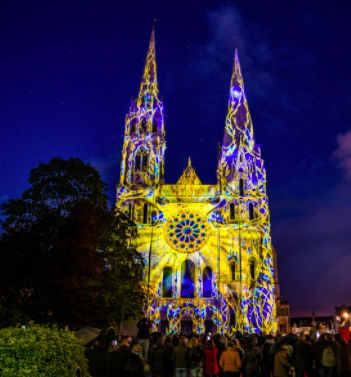 Je connaissais très bien la ville de Chartres et j’avais visité sa magnifique cathédrale gothique à plusieurs reprises. C’était la destination d’un pèlerinage en soi de même que d’être un arrêt important pour les pèlerins sur leur chemin vers Santiago. Pour moi, i Il y avait trop d’histoires liées avec ce lieu: c’était la ville natale de mon premier mari.
Je connaissais très bien la ville de Chartres et j’avais visité sa magnifique cathédrale gothique à plusieurs reprises. C’était la destination d’un pèlerinage en soi de même que d’être un arrêt important pour les pèlerins sur leur chemin vers Santiago. Pour moi, i Il y avait trop d’histoires liées avec ce lieu: c’était la ville natale de mon premier mari.
Puis quelque chose d’étrange s’est produit. Comme tant de« circonstances» le long du chemin, il n’y avait pas d’explication rationnelle à ce qui arrivait à ma jambe droite. Nous avions réservé un hôtel dans le centre de Chartres non loin de la cathédrale. Nous devions y passer une journée de repos au cœur de la vieille ville à nous remettre de l’épreuve de la sortie de Paris et de ses friches industrielles avant de passer à la prochaine étape de notre voyage vers Tours.
J’étais sur le point de me lever du lit lorsque ma jambe droite a refusé de fonctionner. Je ne pouvais pas mettre de poids dessus sans ressentir une douleur intense. Je ne pouvais pas la supporter. Je ne pouvais pas marcher. J’étais là à imaginer toutes sortes de maladies incurables. Richard ne montrait que très peu de sympathie. J’étais enfermé dans un scénario de crime et de punition. J’étais allé en Argentine. J’avais expié ma culpabilité. J’avais marché à travers les friches. Et maintenant je ne pouvais plus marcher. C’était biblique.
J’ai chuchoté: «je ne pense pas pouvoir aller plus loin.» Et puis j’ai ajouté :« Je veux arrêter ».
Richard accepta d’emblée et ce fut comme si un énorme fardeau était levé de mes épaules. Comme si c’était moi qui devais abandonner la quête. Mon soulagement à libéré un flot de paroles entre nous. Nous avons mis ces 4 derniers jours derrière nous et Richard est retourné à son mode de planificateur pour trouver « de grandes alternatives » à notre marche vers Tours.
J’ai balancé les deux jambes sur le côté du lit et marché jusqu’à la salle de bains avant de réaliser que j’étais en train de vivre un miracle. Ces choses-là arrivent sur le Camino.
Nous avons pris le train pour Paris et nous sommes allés en Val de Loire faire une dégustation de vin.
Questions
Que savez-vous des jeux que nous jouons dans des relations intimes ?
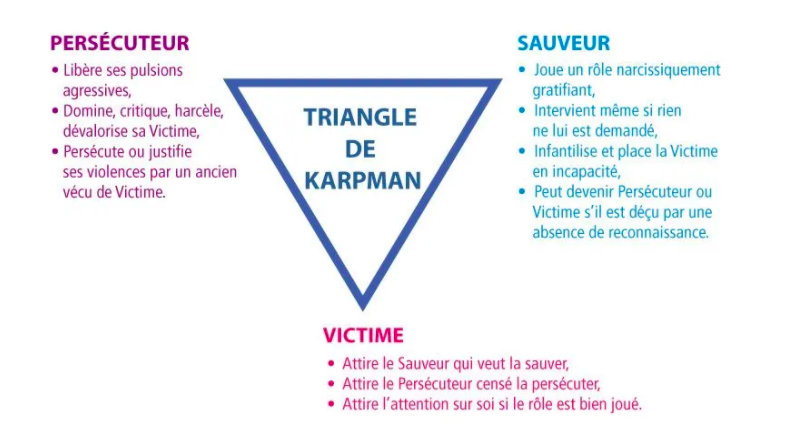 Dans cet épisode pouvez-vous identifier quand qui était dans quel rôle: victime, persécuteur, sauveteur – et à quel moment ?
Dans cet épisode pouvez-vous identifier quand qui était dans quel rôle: victime, persécuteur, sauveteur – et à quel moment ?



